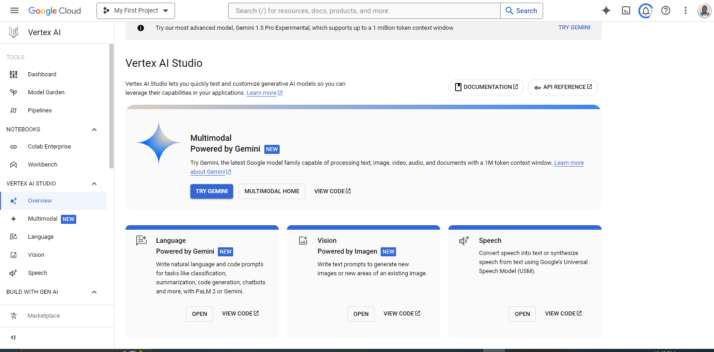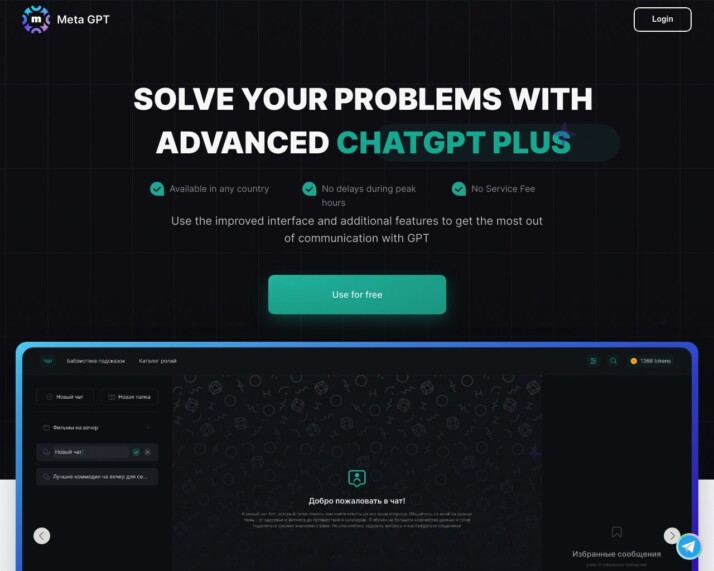Vertex AI vs. MetaGPT: Comparing Enterprise ML and Multi-Agent AI
AI development platforms are reshaping how businesses leverage machine learning and artificial intelligence. This comparison explores Vertex AI, Google’s comprehensive ML toolset; MetaGPT, an innovative framework for multi-agent AI collaboration; and SmythOS, our cutting-edge platform designed for accessible, powerful AI development. We’ll examine each platform’s unique strengths, from enterprise-grade capabilities to revolutionary approaches in AI teamwork, and highlight how SmythOS combines robust features with unparalleled ease of use. Whether you’re a seasoned developer, a business leader, or new to AI, this guide will help you navigate the landscape of AI tools and choose the solution that best fits your needs.
Vertex AI Overview
Vertex AI empowers developers to build, deploy, and scale machine learning models and AI applications. Google’s platform combines data engineering, data science, and ML engineering workflows into a unified toolset, streamlining the entire AI development process.


Vertex AI’s strength lies in its comprehensive suite of AI tools and services. The platform offers multimodal generative AI models like Gemini, which support text, images, audio, and video inputs. These models excel at tasks such as chat assistance, content generation, and complex reasoning. Vertex AI also provides a Model Garden, allowing users to discover, test, and deploy various AI models, including Google’s proprietary offerings and select open-source options.
Vertex AI’s strength lies in its comprehensive suite of AI tools and services. The platform offers multimodal generative AI models like Gemini, which support text, images, audio, and video inputs.
For enterprises, Vertex AI shines with its robust MLOps capabilities. The platform includes a centralized model registry, feature store for efficient ML feature serving, and tools for monitoring model performance. These features enable teams to collaborate effectively and manage the full lifecycle of AI projects. Additionally, Vertex AI integrates seamlessly with Google Cloud’s ecosystem, providing scalable infrastructure and data management solutions.
While Vertex AI offers powerful capabilities, it requires a degree of technical expertise to fully leverage its potential. The platform lacks a true no-code editor, which may present a barrier for non-technical users seeking to develop AI solutions. However, for organizations with the necessary skills, Vertex AI provides a comprehensive environment for building sophisticated AI applications across various industries.
MetaGPT Overview
MetaGPT revolutionizes multi-agent collaboration in AI development. This open-source framework combines human-like Standardized Operating Procedures (SOPs) with advanced Large Language Models (LLMs) to simulate a software company’s structure and workflow.
Researchers from prestigious institutions developed MetaGPT to enhance AI agent teamwork on complex tasks, particularly in software engineering. The platform assigns distinct roles to AI agents, mirroring a traditional software company’s structure with product managers, architects, engineers, and quality assurance testers.


MetaGPT’s core philosophy, “Code = SOP(Team),” integrates established human practices into AI-driven processes. This approach reduces errors common in multi-agent systems, such as cascading hallucinations or logic inconsistencies. The platform breaks down complex tasks into manageable subtasks, handled by specialized agents, ensuring more accurate and robust solutions.
MetaGPT’s core philosophy, “Code = SOP(Team),” integrates established human practices into AI-driven processes. This approach reduces errors common in multi-agent systems…
A standout feature of MetaGPT is its comprehensive documentation generation. Throughout the development process, it creates requirement documents, design artifacts, flowcharts, and interface specifications. These intermediate outputs enhance the final code’s success rate and facilitate better human-AI interaction.
While MetaGPT offers powerful capabilities for AI-driven software development, it requires programming knowledge, limiting its accessibility to non-technical users. The platform’s focus on mimicking human collaboration processes in an AI framework sets a new standard in multi-agent collaboration, but may present a steeper learning curve for those without software engineering backgrounds.
Feature Comparison
Vertex AI and MetaGPT both offer powerful AI capabilities, but with distinct approaches and feature sets. Vertex AI provides a comprehensive machine learning platform with robust enterprise-grade tools, while MetaGPT focuses on multi-agent collaboration for software development tasks.
Vertex AI excels in its integration with Google Cloud services, offering scalable infrastructure and advanced MLOps capabilities. It provides a Model Registry for version control, a Feature Store for efficient ML feature serving, and tools for monitoring model performance. These enterprise-focused features make Vertex AI well-suited for large-scale AI deployments across various industries.
MetaGPT, in contrast, stands out with its innovative approach to multi-agent collaboration. By simulating a software company structure, it enables AI agents to work together on complex software engineering tasks. MetaGPT generates comprehensive documentation throughout the development process, including requirement documents, design artifacts, and flowcharts. This unique feature enhances the success rate of the final code and improves human-AI interaction.
A key difference lies in their accessibility. Vertex AI requires technical expertise to fully leverage its capabilities, lacking a true no-code editor. MetaGPT, while powerful for software development tasks, also demands programming knowledge. This contrasts with SmythOS, which offers a more user-friendly approach with its drag-and-drop interface and no-code options, making AI development accessible to a broader audience.
Feature Comparison Table
| Vertex AI | MetaGPT | SmythOS | |
|---|---|---|---|
| CORE FEATURES | |||
| Visual Builder | ✅ | ❌ | ✅ |
| No-Code Options | ❌ | ❌ | ✅ |
| Audit Logs for Analytics | ❌ | ✅ | ✅ |
| SECURITY | |||
| IP Control | ✅ | ❌ | ✅ |
| COMPONENTS | |||
| Huggingface AIs | ❌ | ✅ | ✅ |
| Zapier APIs | ❌ | ✅ | ✅ |
| Data Lakes | ✅ | ❌ | ✅ |
| DEPLOYMENT OPTIONS (EMBODIMENTS) | |||
| Staging Domains | ✅ | ❌ | ✅ |
| DATA LAKE SUPPORT | |||
| Hosted Vector Database | ✅ | ❌ | ✅ |
| Sitemap Crawler | ❌ | ❌ | ✅ |
| YouTube Transcript Crawler | ❌ | ❌ | ✅ |
Best Alternative to Vertex AI and MetaGPT
SmythOS stands out as the superior alternative to Vertex AI and MetaGPT, offering a comprehensive and user-friendly platform for AI agent development and deployment. Our solution combines powerful features with an intuitive interface, making advanced AI capabilities accessible to users of all skill levels.
We’ve designed SmythOS to address the limitations of both Vertex AI and MetaGPT. Unlike Vertex AI, which requires significant technical expertise, our platform features a visual drag-and-drop interface and no-code options. This democratizes AI development, allowing a broader range of users to create sophisticated AI agents without extensive programming knowledge.
Unlike Vertex AI, which requires significant technical expertise, our platform features a visual drag-and-drop interface and no-code options.
While MetaGPT excels in multi-agent collaboration for software development, SmythOS takes this concept further by enabling multi-agent systems across various domains. Our platform supports the creation of autonomous agents that can work together on complex tasks, mimicking human team structures but with greater efficiency and scalability.
SmythOS shines in its extensive integration ecosystem. We offer pre-built API integrations and templates, significantly reducing setup time and allowing users to focus on innovation. This feature set surpasses both Vertex AI and MetaGPT, enabling seamless connection to various data sources, APIs, and AI models from different providers.
Our platform’s versatility is unmatched. We support a wide range of deployment options, including APIs, webhooks, site chat, scheduled agents, and even deployment as GPTs. This flexibility ensures that AI solutions built with SmythOS can be integrated into existing systems seamlessly, addressing a broader set of use cases than our competitors.
Conclusion
Vertex AI, MetaGPT, and SmythOS each offer unique approaches to AI development and deployment. Vertex AI excels in enterprise-grade machine learning with robust MLOps capabilities and seamless integration with Google Cloud services. MetaGPT stands out for its innovative multi-agent collaboration in software development, simulating a software company structure. However, both platforms require significant technical expertise, potentially limiting their accessibility.
SmythOS emerges as the superior choice, combining powerful features with unparalleled ease of use. Our drag-and-drop interface and no-code options democratize AI development, making it accessible to both technical and non-technical users. We offer a comprehensive suite of tools for creating, deploying, and managing AI agents across various platforms, from APIs to chatbots and scheduled tasks.
Our platform’s strength lies in its versatility and integration capabilities. With support for over 300,000 integrations and compatibility with multiple AI models, SmythOS adapts to diverse business needs and workflows. Our ’Create Once, Deploy Anywhere’ approach ensures maximum flexibility, allowing users to seamlessly integrate AI solutions into their existing systems.
We invite you to experience the future of AI development with SmythOS. Create a free account to explore our platform’s capabilities, or dive into our comprehensive documentation to learn more about how SmythOS can revolutionize your AI workflow. Join us in unleashing an economic revolution through accessible, efficient, and powerful AI solutions.
Last updated:
Disclaimer: The information presented in this article is for general informational purposes only and is provided as is. While we strive to keep the content up-to-date and accurate, we make no representations or warranties of any kind, express or implied, about the completeness, accuracy, reliability, suitability, or availability of the information contained in this article.
Any reliance you place on such information is strictly at your own risk. We reserve the right to make additions, deletions, or modifications to the contents of this article at any time without prior notice.
In no event will we be liable for any loss or damage including without limitation, indirect or consequential loss or damage, or any loss or damage whatsoever arising from loss of data, profits, or any other loss not specified herein arising out of, or in connection with, the use of this article.
Despite our best efforts, this article may contain oversights, errors, or omissions. If you notice any inaccuracies or have concerns about the content, please report them through our content feedback form. Your input helps us maintain the quality and reliability of our information.
